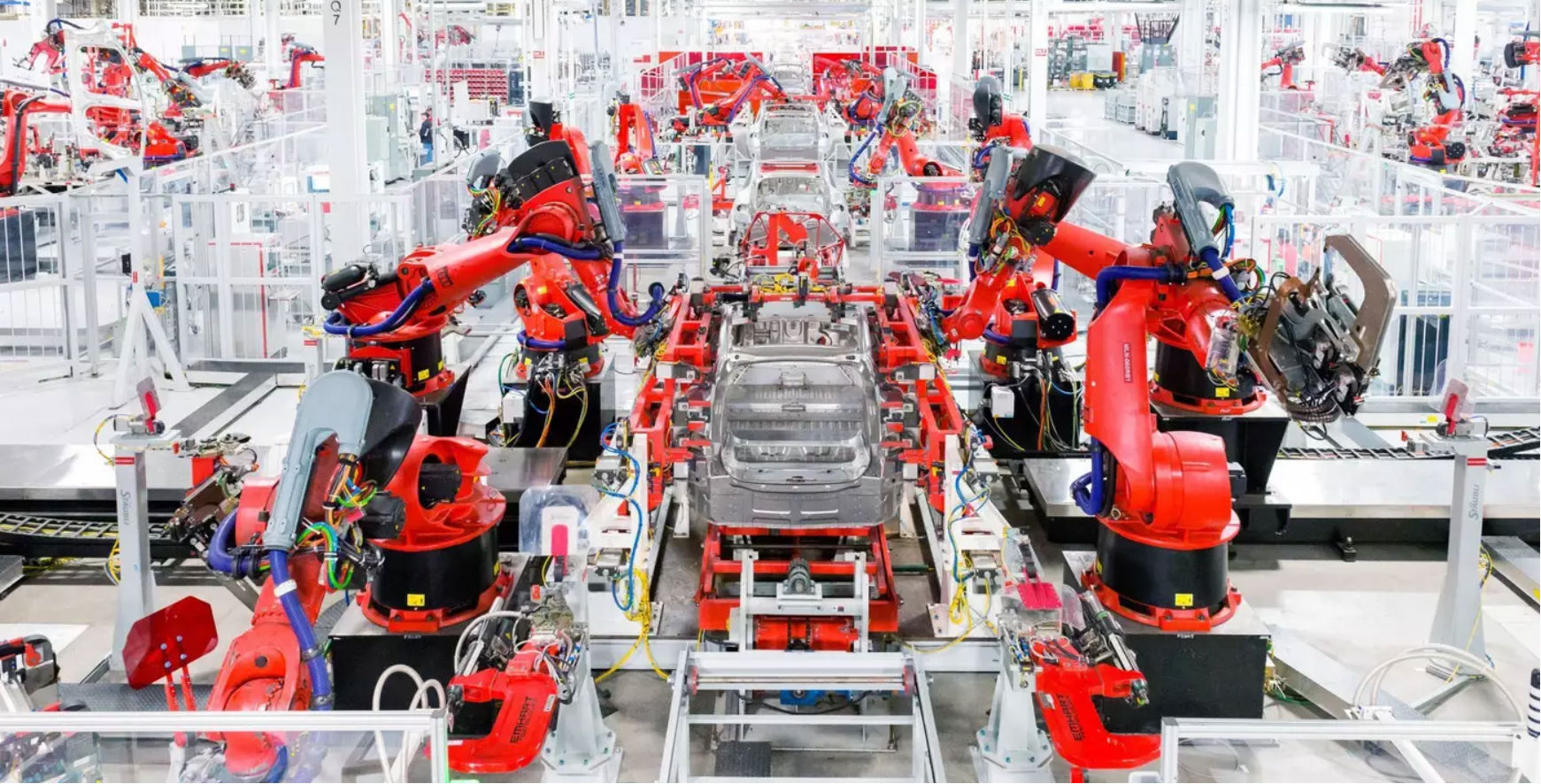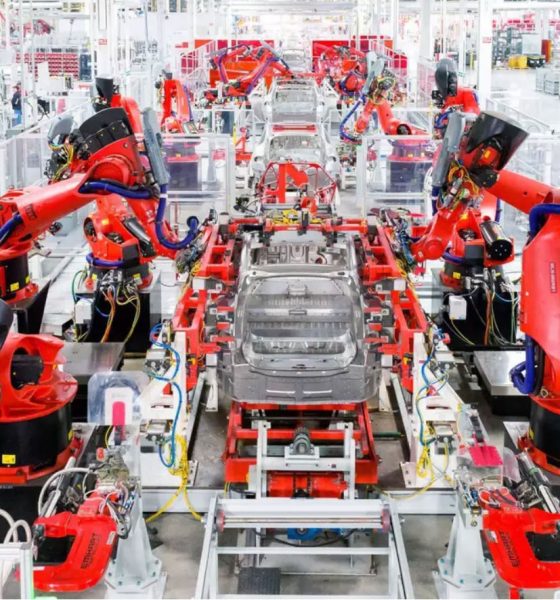

Investor's Corner
Tesla (TSLA) Q2 2018 financial report and earnings call: What to expect
Tesla (NASDAQ:TSLA) is set to release its financial report for the second quarter after markets close on Wednesday, August 1, 2018, followed by its Q2 2018 earnings call at 2:30 p.m. PST (5:30 p.m. EST).
With a vast majority of the second-quarter spent pushing volume production of Model 3, questions are abounding if vehicle demand matches company claims and if Tesla is finally on its way to profitability. Arguably, the elephant in the room will be indicators on whether the company will have to raise more capital due to what Wall Street analysts widely regard as Tesla’s cash flow challenges. Here is an outline of things to expect in Tesla’s Q2 2018 financial results and earnings call.
Tesla’s Losses and Revenue
Considering that the electric car maker continued to invest heavily in the Model 3 ramp over Q2, a consensus among Wall Street analysts suggest that Tesla would be reporting a loss of $2.81 per share. Among 21 analysts, the range for expectations made public about the company’s losses for the second quarter spans from a loss of $3.44 to $1.71 per share.
Wall Street analysts estimate that Tesla would post revenue of around $3.97 billion, which is significantly higher than the $2.79 billion the company posted for the second quarter of 2017. If analysts’ predictions are correct, Tesla would be able to post a year-on-year growth of $42.3%. Ultimately, Tesla’s revenue would be a compelling point in the company’s financial report, validating CEO Elon Musk’s narrative that the electric car and energy company continues to see strong demand in the past seven quarters. Tesla’s revenue has increased sequentially in each of the last six quarters as well.
Model 3 Ramp and Delivery Guidance
Tesla is expected to give an update on the current state of Model 3 production. With the electric car maker managing to hit its self-imposed target of manufacturing 5,000 Model 3 per week in a “burst build effort” during the final week of June, questions are now abounding about the company’s capability to exceed this production rate.
Tesla’s plans and strategies for the delivery of the Model 3 are also expected to be discussed in the Q2 earnings call. With the company recently selling its 200,000th vehicle in the United States, Tesla would likely provide delivery guidance for the Model 3 as the $7,500 federal tax credit starts its phase-out period.
Tesla Energy
Tesla Energy has slowly been growing in the background as the company’s electric car business stayed in the limelight. Over the past months, Tesla has teased several key developments in its Energy business. During the 2018 Annual Shareholder Meeting, Elon Musk mentioned that the company is on pace to “cross a key battery-cost threshold of $100-per-kilowatt-hour later this year.” Such a milestone could cut the cost of its upcoming products such as the Model Y, while pushing Tesla forward as a leader in battery technology.
Updates on large-scale Tesla Energy initiatives, including a 1 GWh scale energy project that Musk teased in the Shareholder Meeting, as well as the South Australia virtual power plant, would likely be discussed as well.
Financial Guidance
Tesla CEO Elon Musk has made his stance clear during the now-infamous Q1 2018 earnings call that he does not intend to raise capital this year. Musk has also reiterated his prediction that Tesla would be profitable in the third or fourth quarter of 2018. This goal, however, hinges on the successful ramp of the Model 3.
During Tesla’s update on vehicle deliveries for Q1, the company stated that the 5,000 Model 3 per week milestone is expected to lay “the groundwork for Q3 to have the long-sought ideal combination of high volume, good gross margin, and strong positive operating cash flow.” Tesla’s Q2 2018 earnings call would likely cover how the company plans to hit the green for the second half of the year.
A webcast of Tesla’s Q2 2018 earnings call could be accessed here on Wednesday at 2:30 p.m. PST (5:30 p.m. EST).

Investor's Corner
Tesla stock closes at all-time high on heels of Robotaxi progress

Tesla stock (NASDAQ: TSLA) closed at an all-time high on Tuesday, jumping over 3 percent during the day and finishing at $489.88.
The price beats the previous record close, which was $479.86.
Shares have had a crazy year, dipping more than 40 percent from the start of the year. The stock then started to recover once again around late April, when its price started to climb back up from the low $200 level.
This week, Tesla started to climb toward its highest levels ever, as it was revealed on Sunday that the company was testing driverless Robotaxis in Austin. The spike in value pushed the company’s valuation to $1.63 trillion.
Tesla Robotaxi goes driverless as Musk confirms Safety Monitor removal testing
It is the seventh-most valuable company on the market currently, trailing Nvidia, Apple, Alphabet (Google), Microsoft, Amazon, and Meta.
Shares closed up $14.57 today, up over 3 percent.
The stock has gone through a lot this year, as previously mentioned. Shares tumbled in Q1 due to CEO Elon Musk’s involvement with the Department of Government Efficiency (DOGE), which pulled his attention away from his companies and left a major overhang on their valuations.
However, things started to rebound halfway through the year, and as the government started to phase out the $7,500 tax credit, demand spiked as consumers tried to take advantage of it.
Q3 deliveries were the highest in company history, and Tesla responded to the loss of the tax credit with the launch of the Model 3 and Model Y Standard.
Additionally, analysts have announced high expectations this week for the company on Wall Street as Robotaxi continues to be the focus. With autonomy within Tesla’s sights, things are moving in the direction of Robotaxi being a major catalyst for growth on the Street in the coming year.
Elon Musk
Tesla needs to come through on this one Robotaxi metric, analyst says
“We think the key focus from here will be how fast Tesla can scale driverless operations (including if Tesla’s approach to software/hardware allows it to scale significantly faster than competitors, as the company has argued), and on profitability.”

Tesla needs to come through on this one Robotaxi metric, Mark Delaney of Goldman Sachs says.
Tesla is in the process of rolling out its Robotaxi platform to areas outside of Austin and the California Bay Area. It has plans to launch in five additional cities, including Houston, Dallas, Miami, Las Vegas, and Phoenix.
However, the company’s expansion is not what the focus needs to be, according to Delaney. It’s the speed of deployment.
The analyst said:
“We think the key focus from here will be how fast Tesla can scale driverless operations (including if Tesla’s approach to software/hardware allows it to scale significantly faster than competitors, as the company has argued), and on profitability.”
Profitability will come as the Robotaxi fleet expands. Making that money will be dependent on when Tesla can initiate rides in more areas, giving more customers access to the program.
There are some additional things that the company needs to make happen ahead of the major Robotaxi expansion, one of those things is launching driverless rides in Austin, the first city in which it launched the program.
This week, Tesla started testing driverless Robotaxi rides in Austin, as two different Model Y units were spotted with no occupants, a huge step in the company’s plans for the ride-sharing platform.
Tesla Robotaxi goes driverless as Musk confirms Safety Monitor removal testing
CEO Elon Musk has been hoping to remove Safety Monitors from Robotaxis in Austin for several months, first mentioning the plan to have them out by the end of 2025 in September. He confirmed on Sunday that Tesla had officially removed vehicle occupants and started testing truly unsupervised rides.
Although Safety Monitors in Austin have been sitting in the passenger’s seat, they have still had the ability to override things in case of an emergency. After all, the ultimate goal was safety and avoiding any accidents or injuries.
Goldman Sachs reiterated its ‘Neutral’ rating and its $400 price target. Delaney said, “Tesla is making progress with its autonomous technology,” and recent developments make it evident that this is true.
Investor's Corner
Tesla gets bold Robotaxi prediction from Wall Street firm
Last week, Andrew Percoco took over Tesla analysis for Morgan Stanley from Adam Jonas, who covered the stock for years. Percoco seems to be less optimistic and bullish on Tesla shares, while still being fair and balanced in his analysis.

Tesla (NASDAQ: TSLA) received a bold Robotaxi prediction from Morgan Stanley, which anticipates a dramatic increase in the size of the company’s autonomous ride-hailing suite in the coming years.
Last week, Andrew Percoco took over Tesla analysis for Morgan Stanley from Adam Jonas, who covered the stock for years. Percoco seems to be less optimistic and bullish on Tesla shares, while still being fair and balanced in his analysis.
Percoco dug into the Robotaxi fleet and its expansion in the coming years in his latest note, released on Tuesday. The firm expects Tesla to increase the Robotaxi fleet size to 1,000 vehicles in 2026. However, that’s small-scale compared to what they expect from Tesla in a decade.
Tesla expands Robotaxi app access once again, this time on a global scale
By 2035, Morgan Stanley believes there will be one million Robotaxis on the road across multiple cities, a major jump and a considerable fleet size. We assume this means the fleet of vehicles Tesla will operate internally, and not including passenger-owned vehicles that could be added through software updates.
He also listed three specific catalysts that investors should pay attention to, as these will represent the company being on track to achieve its Robotaxi dreams:
- Opening Robotaxi to the public without a Safety Monitor. Timing is unclear, but it appears that Tesla is getting closer by the day.
- Improvement in safety metrics without the Safety Monitor. Tesla’s ability to improve its safety metrics as it scales miles driven without the Safety Monitor is imperative as it looks to scale in new states and cities in 2026.
- Cybercab start of production, targeted for April 2026. Tesla’s Cybercab is a purpose-built vehicle (no steering wheel or pedals, only two seats) that is expected to be produced through its state-of-the-art unboxed manufacturing process, offering further cost reductions and thus accelerating adoption over time.
Robotaxi stands to be one of Tesla’s most significant revenue contributors, especially as the company plans to continue expanding its ride-hailing service across the world in the coming years.
Its current deployment strategy is controlled and conservative to avoid any drastic and potentially program-ruining incidents.
So far, the program, which is active in Austin and the California Bay Area, has been widely successful.








